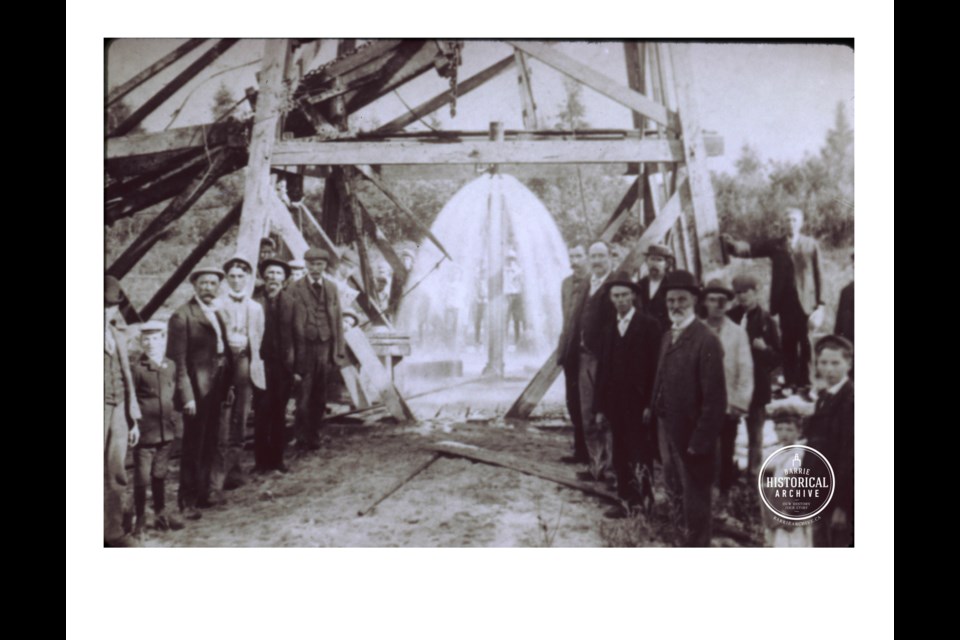Some families seem to suffer more than their fair share of tragedies.
The Irish-American Kennedy clan immediately comes to mind.
In researching the story of the Creswicke family last week, I stumbled upon more heartbreaking incidents than appear in the finished article. It all seemed to be too much for one article – or one family.
Alfred E.H. Creswicke, described in the Northern Advance as “one of the most capable solicitors and criminal lawyers in the Dominion” upon his 1915 passing, was long gone before the unfortunate railway accident that claimed his son, Hal Creswicke. He was also mercifully spared the news that another of his three sons, Maj. Thomas Creswicke, died from a reportedly accidental gunshot wound to the right temple, while cleaning his service revolver in 1943.
The most startling of the sad events that befell the Creswicke family occurred in the latter months of 1856 while they were still homesteading in rural Oro Township. I didn’t quite believe it at first, but the circumstances were reported in several sources.
In a two-week period, Henry and Sara Creswicke lost five daughters to a diphtheria epidemic.
In my own genealogical searches, I have seen records of this type before. Two children died of diphtheria, and 10 days later two of their cousins died of the same thing. It isn’t hard to imagine a happy family get-together where infected children played with their cousins and unknowingly spread the infection that would soon sicken and kill them.
Most of us will never know how horrible diphtheria can be, nor experience the terror that many mothers experienced when their children fell ill during one of the frequent outbreaks that occurred in days gone by. Some types were mild while others, then commonly known as black or malignant diphtheria, tended to be deadly.
Diphtheria is caused by the bacterial organism known as Corynebacterium diphtheriae. The more potent forms of the disease have a mortality rate varying from ten percent up to 90 per cent in the strains that produce a toxin. The toxin is produced when the diphtheria bacteria itself is under attack by a virus known as a phage.
This invisible microbial warfare has catastrophic results for the host, or patient, suffering from the disease. In the beginning, the infected person might experience the fever, headache and sore throat that often accompany any number of simple colds and influenzas, but within 24 hours a telltale sign will appear.
A pseudomembrane will form if the bacteria are toxic. This grey-coloured substance is dead tissue and is made from proteins and waste left behind as the bacteria battles the phage virus. It can coat the tonsils or spread to most of the respiratory system, virtually choking the victim. If that doesn’t happen, the toxins in the bloodstream can still kill by causing heart failure, nerve damage and pneumonia.
This killer disease had many names before 1826 when a French doctor named it for diphtheria, the Greek word for leather, a reference to the pseudomembrane. For 100 years after this, various doctors worked to identify the disease, understand how it spread and create some kind of treatment and prevention.
Once standard vaccination practices came into being in the 1920s, the rate of infection and death fell rapidly. Prior to that, some 2,000 Canadian children died every year from the disease. There hasn’t been a single diphtheria death in Canada since 2000.
Of course, understanding of the disease and mass immunization didn’t happen overnight. The Barrie newspapers frequently printed reminders for local folks to avoid storing cabbages too long, to clean their cellars and gardens regularly, to avoid cheap coal oil lamps and to choose a home on sandy ground as these things were then thought to be connected to the spread of diphtheria.
The Barrie newspapers were also quick to point to the outbreaks of diphtheria in surrounding communities, but rarely mentioned any occurrences in Barrie itself, perhaps unwilling to inspire fear among the local population.
In 1887, a small article of the Jan. 29 edition of the Northern Advance, Dr. Wells, a member of the local Board of Health, took offence to the suggestion that a Mr. Frank Rogers was lying gravely ill with the disease at the Queen’s Hotel and that a Mr. Butterfield had recently died from diphtheria in Barrie.
“There are very few cases of sore throat in the mildest form and certainly no diphtheria of the malignant type. Mr. Rogers’ illness could hardly be categorized as diphtheria at all. The truth is that Barrie is as healthy as any town in Ontario, too healthy indeed in a business way for doctors.”
He was partly correct. Mr. Rogers recovered from his ailment, and Mr. Butterfield actually died from typhoid fever, according to his death registration. Interestingly enough, on that same registration page, five other Barrie deaths were recorded – two of them from diphtheria.



